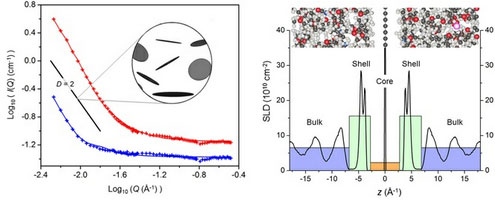| May 28, 2012 |
Researchers develop a scalable method to produce improved yields of single-layer graphene
|
|
(Nanowerk News) Graphene is a remarkable 2-dimensional material that is just one carbon atom thick, providing free-standing atomic crystals with extraordinary physical properties. For example graphene is many times stronger than steel, a better conductor of heat and electricity than copper, and is almost transparent to light. Graphene therefore has numerous potential applications, from ultra-thin displays and touch screens, to transistors and solar panels. However, such applications remain to be realised because there is currently no way to mass-produce graphene.
|
|
London Centre for Nanotechnology researchers have now developed a scalable solution-based method that produces greatly improved yields of single-layer graphene, which can then be deposited onto substrates (see paper in JACS: "Structure and Morphology of Charged Graphene Platelets in Solution by Small-Angle Neutron Scattering").
|
 |
| Figures: (left) In situ small-angle neutron scattering (SANS) from solutions of charged graphene sheets in solution of ammonia and THF. (right) "Core-shell-bulk" model of graphene solvation that provided the best fit to the experimental SANS data
|
|
First, bulk nanographite was reversibly charged and expanded in a solution of potassium and ammonia.
|
|
Second, this "graphenide" salt was then dissolved in organic solvents such as THF.
|
|
The presence of single-layer graphene in solution was confirmed by in situ small-angle neutron scattering conducted at the Institut Laue-Langevin in Grenoble, and was corroborated by atomic force microscopy and Raman spectroscopy.
|

